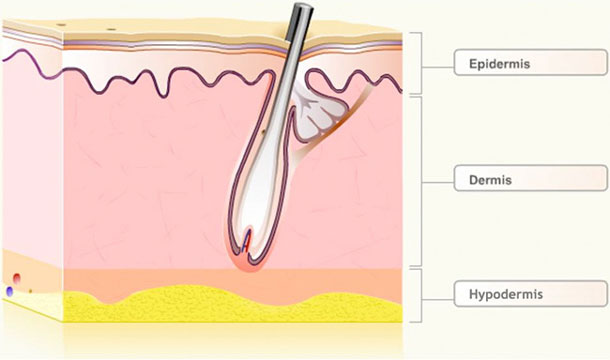| |
 Acne & Acne Scarring Acne & Acne Scarring
 Psoriasis Psoriasis
 Rosacea Rosacea
 SkinTag, Mole & Wart Removal SkinTag, Mole & Wart Removal
 BOTOX® for Migraines BOTOX® for Migraines
 BOTOX® for Hyperhidrosis BOTOX® for Hyperhidrosis
 BOTOX Cosmetic® BOTOX Cosmetic®
 Dermal Fillers Dermal Fillers
 PRP Vampire Rejuvenation PRP Vampire Rejuvenation
 eDermastamp™ Microneedling eDermastamp™ Microneedling 
 Softening of Scars Softening of Scars
 Oxygeneo™ Oxygeneo™ 
 Silkpeel™ Dermalinfusion™ Silkpeel™ Dermalinfusion™
 Chemical Peels Chemical Peels
 Rosacea Rosacea
 Mesotherapy Mesotherapy
 BodyFX™ Body Contouring BodyFX™ Body Contouring
 Diolaze™ Laser Hair Removal Diolaze™ Laser Hair Removal
 Forma™ Thermal Body Remodelling Forma™ Thermal Body Remodelling
 Fractora™ Skin Resurfacing Fractora™ Skin Resurfacing
 Lumecca™ IPL Skin Rejuvenation Lumecca™ IPL Skin Rejuvenation
 Photofacials Photofacials
 Vascular Lesions Vascular Lesions

|
|
 |
|

In order to understand how skin rejuvenation with dermal fillers is possible, it is important to understand basic skin anatomy. Skin is the largest organ of the body and is made up of approximately 70% water. As a barrier, it protects the body against invasion of microorganisms and against losing fluid. It also helps regulate body temperature.
The skin is made up of three layers, each playing a vital role in maintaining health and beauty.
- The deepest layer is the hypodermis, made up of fatty tissue that cushions and supports the two layers of skin above it.
- The middle layer is the dermis. It contains collagen and elastin for shape and elasticity. Collagen and elastin are constantly renewed in young, healthy skin. Older skin tends to sag and wrinkle because the collagen and elastin levels are reduced. This is also where blood capillaries, hair follicles, and sweat and oil glands are found. As we age, our oil glands become less active and our skin becomes drier and more prone to the formation of fine lines.
- The top layer, or epidermis, is where essential cell renewal takes place. In younger skin, cells are replaced about every 15-30 days; in aging, this process takes twice as long.

Skin is also composed of the following major components that contribute to its health:
- Collagen gives skin its strength and durability and is one of the strongest proteins in the body. As we age, collagen begins to deteriorate and causes the skin to become thinner.
- Elastin is a more stretchable protein that maintains skin's elasticity. Over time, elastin breaks down and causes wrinkles.
- Hyaluronic acid is a natural complex sugar that gives skin volume. It retains water like a sponge, hydrating our skin and increasing its volume. As we age, cells lose the ability to produce hyaluronic acid and our skin becomes dehydrated, causing folds and wrinkles to form.
|
|















 Acne & Acne Scarring
Acne & Acne Scarring



